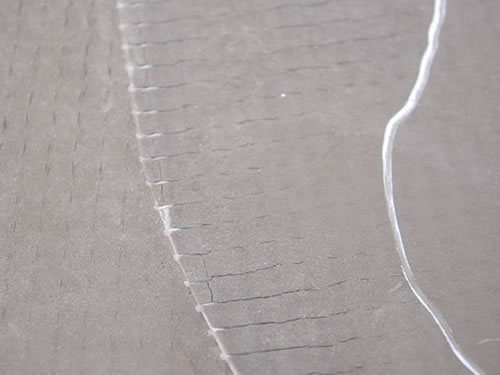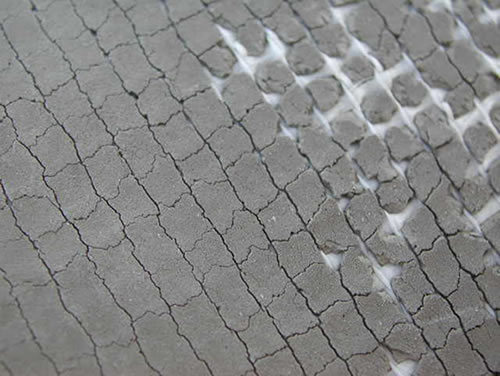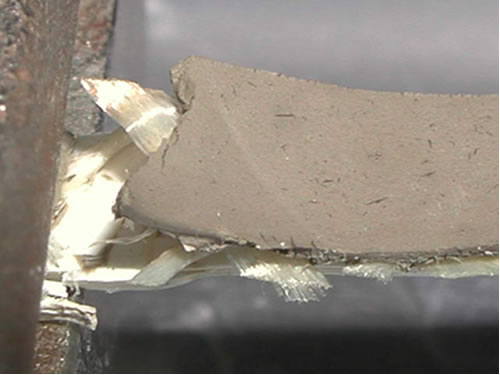I-CORP reports: A post-tensioned , white bottom , green top , RPP floating cover of a potable water reservoir (above) suffered extensive cracking through the exposed green layer on the windward side slopes. Cracking is shown in Figures 1 and 2. This is far more extensive than the cracking I have seen in other PP liners/covers. The windward slope cover had been extensively stressed in service due to wind uplift. The cracking did not penetrate the white layer. The geomembrane on the water was not cracked.
 |
Figure 1. Start of cracking along warp reinforcing yarns in cover (left) and patch (right). Specifications required that patch edges should be extrusion beaded, but they were not beaded. Note cracking at 90 degrees in cover and patch! This surface is the top of the cover.
 |
Figure 2. Most serious cracking. Cracking has started on weft reinforcing yarns (bottom left to top right) as well as on warp yarns (top left to bottom right), and complete surface layer begins to break away from on top of reinforcing yarns.
Stressed and unstressed specimens of as-manufactured material were exposed to UV radiation in a QUV unit according to GRI.GM18. After only 500 hr the stressed specimen had failed by cracking like the floating cover (Figures 3 and 4). HP-OIT of the as manufactured green PP was 133 min . After 1600 hr UV exposure the HP-OIT of the unstressed/exposed material was 102 min, but for the stressed /exposed material it was < 1 min. Clearly stress in combination with UV exposure strongly accelerated aging in this material. The acceleration is not as significant during thermal oxidation (unstressed HP-OIT 130 min, stressed 62 min).
 |
Figure 3. Major crack at stress concentration along edge of clamp (left). Cracking occurred along warp yarn. Specimen was cut on the bias so yarns would not take the load.
 |
Figure 4. Specimen to right of Figure 3. Another major crack (left) initiated at warp yarn. Some cracking had just started in the white bottom layer at the break to the right (not shown). Note minor top surface cracking.
Clearly, design and installation practices must minimize stresses in the cover. Alternatively, additive formulations need special attention. This problem is NOT generic to PP geomembranes.
Contact Ian Peggs for more details. A complete case history is planned.











